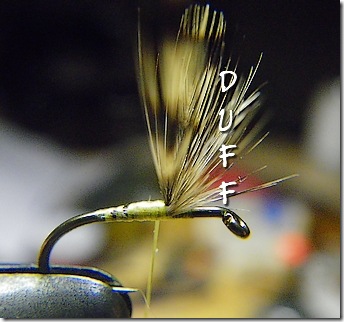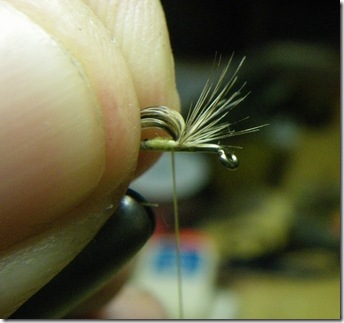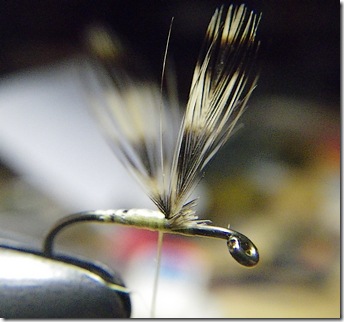When tying on hackle tip wings you can save yourself grief if you take the time to prune the duff that is part of the tie-in area created when the tips were mounted.

Most tiers simply leave the fibers trapped by the thread, lifting and pushing them back towards the wing when the hackle is wound forward. In most cases that forward-facing tilt will be caught by later turns of the hackle and all those fibers will wind up intermixed with thread, head cement, and the eye of the hook.

Instead take a moment to pull the wing tips back exposing the duff material and removing it completely with a few snips of your scissor. This simple step almost ensures the eye of the fly will be free of fiber when it’s time to finish it off with a whip finish.

With the extra fibers cut short, nothing is left to impede the hackle, roll the stem into an odd position, or is long enough to be bound down by the hackle stem and combine with head cement to block the eye.
This simple step allows the wings and their angle to set and locked into position, less likely to be moved by the subsequent steps of the fly and any accidental materials forced into their path via torque.

Thanks KB, I always take note of your tying tips. It’s these little tricks that can make or break a well-tied fly.
Some represent decades of pain and suffering, and the aggregate being the difference between beginner and expert.
I saw the title and reminded me of my beef with Fly Fisherman and why I haven’t renewed. That pretty much sums it up.
The last issue I eyeballed (at the newstand) suggested there were no fish in North America any longer.
Naturally I was shocked given no one had told me.